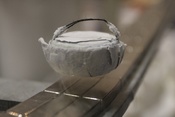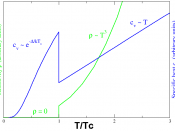INTRODUCTION
We've all heard about superconductivity. But, do we all know what it
is? How it works and what are its uses? To start talking about
superconductivity, we must try to understand the how 'normal' conductivity
works. This will make it much easier to understand how the 'super' part
functions. In the following paragraphs, I will explain how superconductivity
works, some of the current problems and some examples of its uses.
CONDUCTIVITY
Conductivity is the ability of a substance to carry electricity. Some
substances like copper, aluminium, silver and gold do it very well. They are
called conductors. Others conduct electricity partially and they are called
semi-conductors. The concept of electric transmission is very simple to
understand. The wire that conducts the electric current is made of atoms
which have equal numbers of protons and electrons making the atoms
electrically neutral. If this balance is disturbed by gain or loss of electrons,
the atoms will become electrically charged and are called ions.
Electrons
occupy energy states. Each level requires a certain amount of energy. For an
electron to move to a higher level, it will require the right amount of energy.
Electrons can move between different levels and between different materials
but to do that, they require the right amount of energy and an 'empty' slot in
the band they enter. The metallic conductors have a lot of these slots and
this is where the free electrons will head when voltage (energy) is applied. A
simpler way to look at this is to think of atoms aligned in a straight line (wire).
if we add an electron to the first atom of the line, that atom would have an
excess of electrons so it releases an other electron which will go to the
second atom and the process repeats again...


